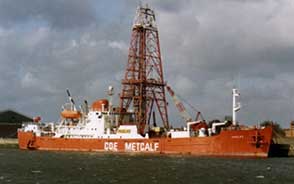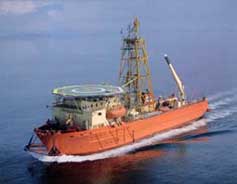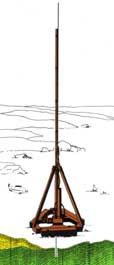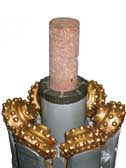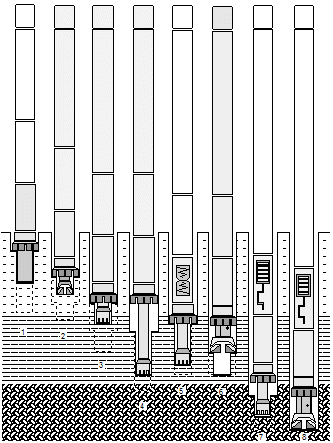|
Drilling information
Drilling vesselsDrilling ships with dynamic positioning systems were employed together with marine Piggyback or CCS drilling equipment in nearly all cruises. Heatflow measurements were also done from these ships. Various fishing, supply and survey vessels were used in the early-mid 1980s to obtain short bedrock cores using a small deployable electric drill and overburden material using a vibro-corer.
Drilling techniques |
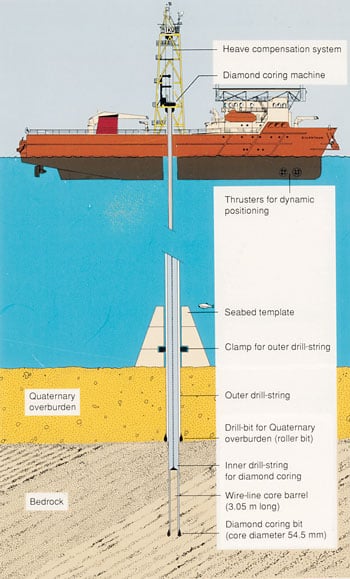 | The piggyback diamond coring machine rides on a platform on top of the outer drillstring. Its drill string has an outer diameter of 88.9 mm and runs inside the API string that acts as a casing or riser for the inner drill string.
As the piggyback coring machine always has a constant distance to the bedrock, the diamond coring can be carried out with the same precision as on land. When the core barrel (3.05 m long) is full (indicated by increased mud pressure), it is retrieved from the hole using a wire, and a new barrel is dropped into the hole. Maximum core length is 3 m, core diameter is 54 mm. Core recovery obtained with the piggyback sys-tem is typically 97 - 99 %.
Principle of the Piggyback coring method. |
Drill bit (roller bit) for Quaternary overburden, |
|
Complete Coring System (CCS)
The water depth of about 1500 m at the Vøring Plateau prevented the use of the Piggyback method, as the double drill string would by far exceed the maximum allowable dynamic load (40 tons) of the derrick of M/S Bucentaur. A coring system of Russian construction was therefore employed. It uses a single 5 3/4" drillstring of aluminium (O.D. 197 mm, I.D. 146 mm) and a suite of wireline-operated downhole tools for drilling, coring and reaming, e.g. various coring tubes, a retractable bit and a mud-driven downhole turbine. All coring/sampling tools and all drill bits except the casing show (reaming bit) of the main drill string can be operated and exchanged without pulling the drill string. Maximum core length is 4.5 m, core diameters are 97 mm and 67 mm. Core recovery was significantly poorer than that typically obtained with the Piggyback system. |
CCS: Modes of operation (grey = modules that generate or transmit power). |

